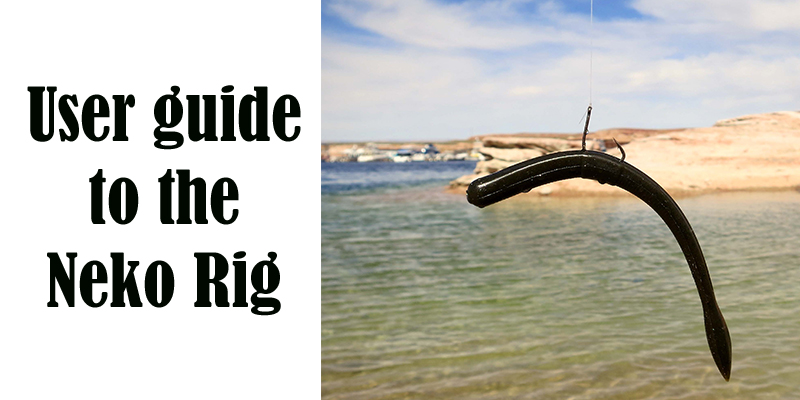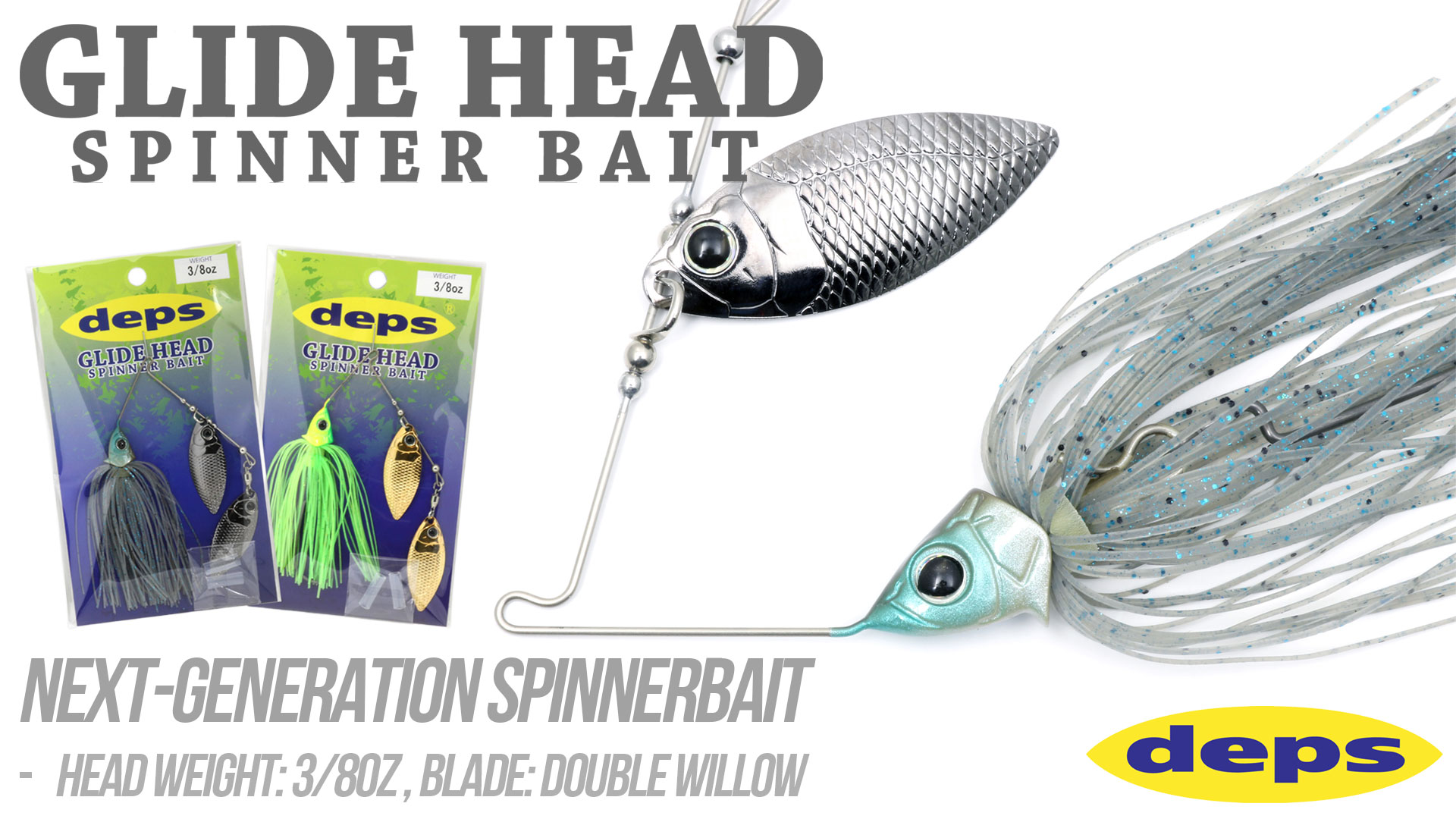
Many of us have heard about the “Neko rig” but you may not have tried it yet or even know that much about this technique.
What we do know
We know the Neko rig originated in Japan and it’s a finesse worm tactic that works best with light tackle spinning gear.
We know it has been used on the west coast, in southern California for finessing lure-shy lunker bass for over a decade now, and it’s a tournament tactic that taciturn western pros use on the Elites and Tour events, but they say very little about it.
We also know that nail weights for plastic worms have been out for decades. The Neko rig technique does involve nail weights – but there’s a lot more to it than that.
Interested to learn more?
At the turn of the century, the late 1990s to early 2000s, this technique began gaining popularity throughout Japan.
Haruhiko Murakami, a legendary lure designer in Japan originally developed and advanced this technique throughout the Japanese bass industry by adding tungsten nail sinkers to the heads of soft plastic finesse worms.
Murakami coined the rig’s name from the phrase “Neko-sogi” which literally means “the rig that catches all the fish like a vacuum cleaner.”
The lure concept he envisioned for the Neko rig was simple yet brilliant: to develop a weighted wacky worm rig that can be hopped or dragged along the bottom.
The hook is inserted wacky style in the plastic worm’s midsection but since the nail weight is inserted in the head of the worm, this set-up falls headfirst at a much quicker rate than a wacky jighead of the same weight rigged in the center of a worm.
Murakami wanted the head of the worm to rest or drag on the bottom while the rest of the worm pointed upward naturally off the bottom, thus allowing the worm to be snagless, especially when rigged with a wacky style hook with a wire or light filament weedguard. On open bottom, an exposed wacky style hook works as well.

Nail weights to use
The nail weights typically used in Japan range from 1/64 to 1/16 ounce and are predominately made from tungsten, a much harder, smaller and denser material than lead.
Japan tournament pro and Reins pro-staffer Ryo Shinotsuka explains that, “The reason why tungsten nail weights are better is because when you drag the worm on the bottom you can feel the weighted worm easier because of how dense and sensitive the weight is.” Also, he says that because the worm stands upright part of the time, it makes it appear like a baitfish is feeding on the bottom which appeals to the bass.
Zappu’s Tungsten Nail Sinker – One of the more popular brands in Japan also sells well in the USA for distributor Optimum Bait Company. Available in 3 popular finesse worm sizes: 3/64, 1/16, 1/13 oz.
Reins TG Nail Sinker – Comes in 8 sizes: 1/16, 1/14, 5/64, 3/32, 7/64, 1/8, 5/32, 3/16 oz. The most popular sizes in the USA are: 1/16, 3/32, 1/8 oz and 3/16 oz (for reaching deep ledges).
Worms to use
“Originally, natural sinking worms made with salt in the plastic were used to popularize this technique, and this style of sinking worm is still what’s mostly used in Japan,” explains Ryo.

“Reins Swamp Movers are sinking, salt-infused and quite popular in Japan today. Swamp Movers are very heavy worms and can be cast with great ease, even with the lightest nail sinker. Swamp Movers are tough and durable so they don’t get torn off a Neko rig as easily as softer worms,” says the Reins pro.

Lure action to use
The Neko rig is a wacky worm technique. The worm’s body bow, flexure and end tip vibration is akin to the lure action produced with a weightless wacky rig, a wacky jig, or dropshotting a wacky-rigged worm.
However, the hook is inserted “in line” with the ballast “below” and with the pull point far forward in the first third of the Neko-rigged worm, making the head stay down and rock side to side, whereas the last two-thirds of the worm appears to develop a vigorously swimming, fluid tail wiggling minnow baitfish deception if rigged right. That’s the ideal action to envision while presenting the Neko rig.
Note that Japanese anglers really fish the Neko rig different than most US anglers. The Japanese use a lot more slack in the line when shaking back and forth to make the worm fold and unfold repeatedly.
Collapsing, keeling over action
“The Swamp Mover produces the most natural action as it folds over on itself (loses deformation) when it’s stopped on the bottom. Many Neko rig enthusiasts anticipate the instant the worm is stopped on bottom, deforms and falls over is a high percentage strike trigger. They say this most natural falling action when stopped on bottom holds the highest appeal for bass. The negative is you get stuck and lose a lot more rigs on the bottom when the Swamp Mover falls over. That’s where a snagless style of hook helps prevent losses,” instructs Shinotsuka-san.

Hooks to use
The other thing one needs here are the hooks for Neko rigs.
What’s different from other wacky tactics is that the hook is inserted directly in line with the pull point and the fishing line so that the worm will pull straight ahead and stay upright – not canting or pulling to one side or the other.
Ryo prefers using the Nogales brand Mosquito series of wacky style hooks with weedguards as he says those work best for him. However, we don\’t want you to be turned off from trying this technique because you find it hard to get a JDM (Japanese domestic market) hook. Simply get started with the most popular wacky style hooks you may already be using – exposed and weedless. Whatever you may use for weightless wacky rigging, those hooks are probably good to get started with the Neko rig – and take it from there to fine-tune it as you go. As you gain experience, you can upgrade to a more specialized hook used in Japan. However, if you are satisfied with the worm action, hook-up ratio and landing most of your fish, then you are using the right hook from that aspect.
Retaining weighted worms
If too many of your worms fly off the hook on the cast, or get shaken off the hook too often while fighting fish, you may want to try another hook style to see if that helps reduce this. You can also try casting underhand and fighting fish with more finesse.
Also, one or more of your system components – rod, reel, line, worm or weight may be mismatched, causing undue stress on the worm resulting in more being lost than with properly matched gear. For example, too stiff a rod tip can be one reason for losing more worms on the cast and on the strike versus a softer, more forgiving rod tip.
Another way to prevent this from happening, many USA anglers use O-rings to retain weightless wacky worms. In Japan, anglers will use narrow bands of heat shrink tubing. Ryo says, “You can buy it at a DIY center really inexpensively, and shrink it down to the diameter of your worm. That’s what we use in Japan to save from losing worms with the Neko rig.”
Spinning rod, reel to use
The most popular equipment in Japan for the Neko Rig is an ultra-light power, fast-taper 6’0” to 6’6” spinning rod. For the most part, the spinning reels will be spooled with 3 to 5 lb fluorocarbon in Japan.
USA anglers tend to go a little heavier although the popular size spinning reel in both countries is a “2500” series and these are probably the number-one selling reels for Shimano, Daiwa and others.
Fluorocarbon line to use
Ryo Shinotsuka, one of the most well-known finesse anglers in Japan favors Sunline FC Sniper because of its small diameter and the ability to feel the bottom better. Ryo says, “Our lure setups and presentations are so light that we must use 2 to 5 pound fluoro to fish effectively.” He continues to explain that he gets better distances on the cast, gets better action out of the finesse rig, has less line trouble, can feel the bottom better and catches more fish when using as light a line as possible.

A tournament tactic
Japan’s Lure Magazine editor-in-chief Hideyuki Nomura says Japan’s tournament anglers rely on the Neko rig setup more so than any other worm presentation now and this has become the tournament winning finesse worm technique used today.
Nomura explains why the Neko rig is so essential for Japanese tournament anglers and also the everyday fisherman. “Over the years, the Neko rig has been getting more play in Japan because our lakes have more fishing pressure and the bass population is fewer than before so a Neko rigged worm can be fished more productively in more situations.”
“This technique is especially effective in Japan because bass are wary and wise now. When they know anglers are present, the bass do not like aggressive lures that violently displace too much water like crankbaits and spinnerbaits in such situations,” says Nomura-san.
He explains that a Neko rigged finesse worm displaces just right amount of water so pressured bass will react to it.
Power Neko
However, the Neko Rig does not have to be strictly finesse notes Nomura-san.
“On some of Japan’s larger lakes like Biwa, anglers will pair a 1/16 ounce nail sinker with a 10-inch worm and work it above the grass line or over a rocky stretch and do extremely well. Here, a medium heavy rod and up to 8 to 10 pound line may be used for big bass in thick cover.”
Suspended Fish
The Neko rig can also be very effective on suspended fish in the mid-water zone. It can be counted down and swam through bass suspended at any mid-water target depth. Cast your line out and as you reach the area the fish are suspending in, slowly shake the Neko rig as you swim the worm back to you. The key to working it this way is the slack in the line. The shaking will create the slack so a steady slow crank will wind in the slack and let the bait do what it’s supposed to do. As the line drags it through the water column, the weighted head will stay down, the worm will stay upright, flex as it swims through mid-water with its tips quivering, vibrating and shaking its tail enticingly.

Vertical versatility
The Neko rig can also be fished vertically on the fall like a Zappu wacky jig, only faster. Areas such as rock piles, drop-offs and other vertical structure points are perfect situations where the Neko rig will produce handsomely at times when a fast fall triggers bites. Bass will often follow the Neko rig down to the bottom and pin it there. As soon as it touches down, be ready to set the hook.
Ryo Shinotsuka leaves us with his parting advice, “When the bass are suspended like in the summertime shaded areas then you should go with the wacky jig’s slower fall, but when you need a quicker presentation and the bass are hugging the bottom then tie on a Neko Rig.”
Now you know much about how to use the Neko rig. So go out and try it next time – and every time – you are on the water. You’ll soon agree with the rig’s originator Murakami-san, this literally is “the rig that catches all the fish like a vacuum cleaner.”





